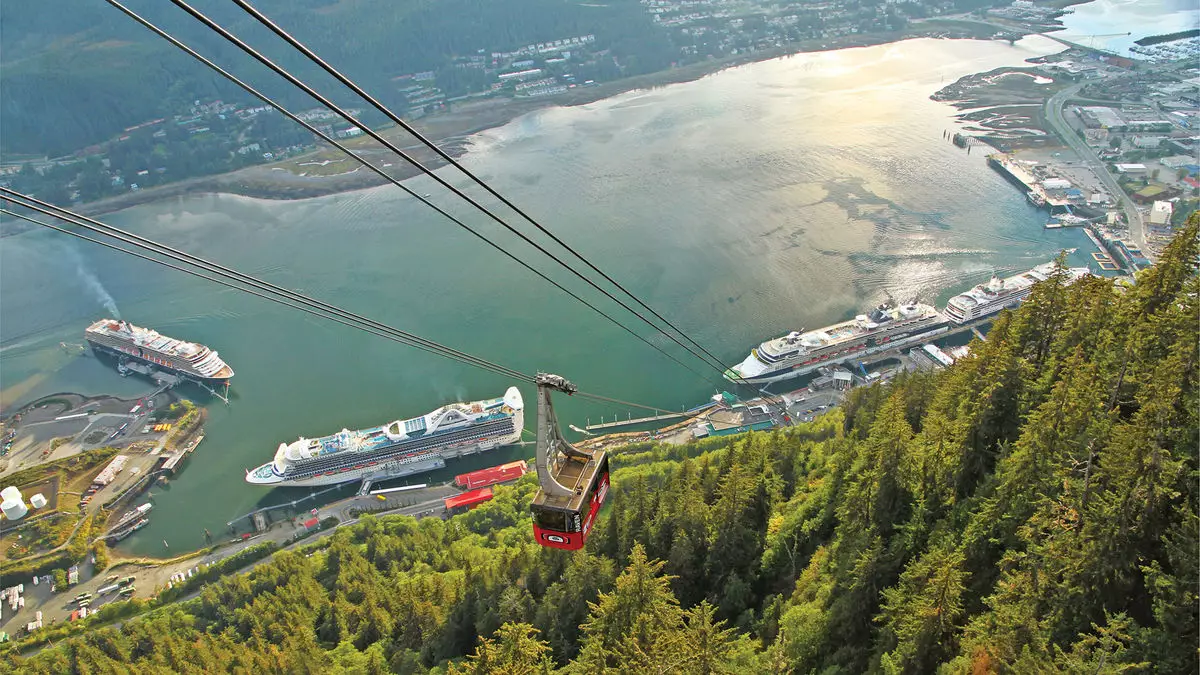The landscape of cruise tourism in Alaska is undergoing a significant transformation, with various ports expressing contrasting opinions on the industry’s future. While some regions are placing restrictions on cruise ships to meet community concerns, others are actively seeking to expand their tourism infrastructure. The situation encapsulates a growing tension between economic benefits and community sentiment, one that is crucial for stakeholders to navigate effectively. Russell Dick, CEO of Huna Totem Corporation, epitomizes this ongoing struggle by challenging the notion that all voices in Southeast Alaska oppose cruise tourism. Dick expressed frustration with the cruise industry’s potential plan to withdraw from Alaska, emphasizing that the interests of smaller ports and communities should not be overlooked.
Huna Totem has worked diligently over the last two decades to develop facilities that blend tourism with natural beauty, as illustrated by Icy Strait Point’s opening. This expansive 32,000-acre port replaces urban landscapes with pristine wilderness, offering tourists unique experiences, including wildlife safaris and exhilarating zip lines. More recently, this corporation has initiated the opening of other ports, like the double-berth facility in Whittier, created in partnership with Norwegian Cruise Line, showcasing how smaller ports can become viable alternatives to larger destinations like Juneau.
As acknowledged by Robert Morgenstern, Carnival Corporation’s senior vice president of Alaska operations, the high passenger caps in Juneau prompt an imperative shift toward alternative ports. His argument that Juneau does not have to monopolize itineraries illustrates a growing recognition that diverse ports can equally serve the needs of cruising tourists. Yet, this requires significant collaboration between cruise operators and port authorities to ensure that travelers are attracted to these new locales, thereby broadening the scope of Alaskan tourism beyond the iconic sights of Juneau.
The emergence of smaller, more intimate ports like Port Klawock also strengthens this argument. Specifically designed to accommodate luxury vessels, Port Klawock holds promise for expansion and appealing to a different demographic of travelers. However, convincing cruise lines and, more importantly, tourists of these benefits remains a challenge. Dick stresses that the allure of Alaskan cruising can be equally found outside of Juneau, broadened by the right marketing strategies and experiences that resonate with travelers.
The economic ramifications of cruise tourism in Alaska cannot be overstated. Many local communities, particularly those stricken by declining industries like timber and fishing, view this sector as a pivotal source of revenue. Morgenstern emphasizes that cruise lines are keen to explore opportunities in various Alaskan ports where the positive impact of tourism could help revitalize struggling communities. This creates a unique opportunity where both the cruise industry and local populations can mutually benefit.
Moreover, locations in British Columbia such as Prince Rupert are ahead of the curve, developing shore excursions aimed at enhancing travelers‘ experiences beyond mere dockside visits. This strategic foresight signals a shift toward enriching the cruise experience, which could prove beneficial for both ports of call and cruise lines. Carnival Corporation’s interest in ports like Wrangell, which is historically underused but holds potential for growth, exemplifies an adaptable strategy focused on diversifying itineraries that cater to evolving traveler preferences.
Further complicating the current dynamics is the increasing anti-cruise sentiment expressed in various Southeast Alaska communities. Julie Saupe, CEO of Visit Anchorage, noted that larger regions like Anchorage may not feel the pressure of cruise traffic as intensely as smaller towns. Anchorage’s infrastructure allows for a more dispersed experience, reducing the local impact while still benefiting from increased tourism. This hints at an emerging strategy that could influence cruise itineraries towards cross-gulf travel, which may ease some community concerns.
However, it is essential for stakeholders to adopt a collaborative approach to address the needs of both cruise operators and local communities. Understanding that sustainable tourism can only be achieved through mutual respect and cooperation paves the way for growth that doesn’t come at the expense of local voices. As the industry grapples with these conflicting perspectives, the future of cruise tourism in Alaska will hinge on how well it can adapt to an ever-evolving landscape, balancing economic aspirations with the values and sentiments of its communities.


Napsat komentář